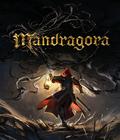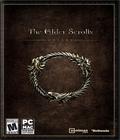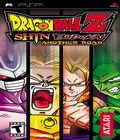Genre: Fighting
Publisher: Atari
Developer: Dimps Co.
Release Date: March 20, 2007
If you played the previous PSP offering Dragonball Z: Shin Budokai, don't expect many changes in Dragonball Z: Shin Budokai: Another Road. The gameplay is almost identical to the last version, with all of its virtues and vices. Players take control of one of a score of characters from the Dragonball Z television show and movies and pit them in one-on-one combat against one another. Although there is a wide cast of characters, each one controls almost identically to the last. Occasionally some of the characters' moves involve hitting the Circle button during the attack for added damage, but those are few and far between.
The only significant additions to the basic gameplay are the Aura Bursts. Aura Burst Charges allow your character to enter a unique extra-powerful state; for example, the Super Saiyan heroes gain a substantial increase to their attack power in exchange for a rapid drain of their ki energy, and the immortal Majin Buu regenerates his health. Aura Burst Guard allows your character to throw up a wall of energy to more effectively block incoming attacks. Of the two, the only one that really matters is the Aura Burst Guard, because it's incredibly powerful, hard to break, and computer enemies will use it almost constantly. This doesn't make them that much tougher, but it does cause battles to become more frustratingly long.
The biggest addition to the game is the "Another Road" mode found in the title. Trunks, one of the Dragonball Z heroes, is actually from an alternate timeline where most of the heroes were killed after the protagonist, Goku, died of a heart virus. With help from the normal timeline, Trunks gains the strength to go back and save his world from an Android menace. Another Road is set shortly in the future of that timeline, where Trunks is forced against the forces of Majin Buu, Brolly and Cooler, three villains who were defeated by the now deceased Goku in the real timeline, but provide too large a threat for the time traveler to deal with by himself. Naturally, he takes the easier solution: Travel back to the alternate timeline, gather the strongest warriors he can, and bring them back to help save his world from the ultimate evil.
For Dragonball Z fans, this mode was the game's biggest selling point, as it was a chance to see a popular fan favorite character deal with a brand new storyline. Sadly, the writers completely dropped the ball on this. Rather than trying to tell a new story, they simply used the Deus Ex Machina of having Trunks travel back and bring the other heroes to his time. It turns what should be an original story into nothing more than a significantly more boring rehash of the Majin Buu Saga.
The biggest difference between Another Road and the rest of the game is the addition of Field Mode, which places you on an overworld map in a specific area of either planet Earth or the planet New Namek. You choose a primary character, and that character, as well as two computer-controlled A.I. assistants, must attempt to stop evil villains from ravaging the cities that dot the map. The longer an enemy is left alone near a city, the more they will damage it.
Luckily, stopping them is really quite simple to do. You simply fly your character into an opponent to fight them, changing from the Field mode to the normal fighting game mode. Each time you defeat an opponent, it uses up one of their Senzu Beans; running out of Senzu Beans and being defeated means that character leaves the field. Your primary goal for most stages generally involves defeating all of the enemies on the map until their leader appears, and once the leader is down, the stage is over. A few missions throw in twists, like protecting a specific city or collecting Dragon Balls from defeated foes, but for the most part, it just involves the exact same gameplay as the regular field mode.
Your computer-controlled allies function basically as glorified meat shields rather than true assistants in this mode. Each ally has his own unique personality traits, such as "defend cities" or "rushes at enemy," but these traits do little to actually influence the character's behavior. They float around, attacking enemies as they get nearby. Unlike the primary character, you don't control what happens in battles with these AI characters. Instead, the two battle off-screen, and the only sign of the battle's progress you see is their health bars rapidly dropping. Your allies can occasionally take out enemies all by themselves, but what they mostly do is slow an enemy long enough for you to fly over and do the fight yourself.
The only way to keep your allies from being slaughtered in a matter of moments involves the card-based customization, which allows you to modify your heroes in various ways. Each hero has a 3x3 grid available to him or her, and these grids can be filled with a number of cards that improve the basic stats. Some cards improve physical damage, others increase the amount of health a character has, while yet others simply exist to modify other cards on the board. These power-ups can serve to improve your primary character or allies but are not quite as interesting as one would be led to believe. Cards can be gotten in one of two ways: random prizes for defeating a foe and by spending Zenny (the currency of the Dragonball Z world) at a card shop. The random prize element is simple frustration. Rather than consistently getting good cards, you will have to hope that you don't get stuck with yet another +1 Health card once again. Thus, most of your good cards will come from the game's card shop, which means you'll end up finding a lot of redundant cards. Why would you bother to buy a +1 Special Attack card when +4 and +5 cards are available right from the outset?
The one thing that provides any challenge to the Another Road mode is the Missions. Every stage in the game has optional missions that you can complete, which pop up when they are available. These range from simple tasks, like preventing any city on the map from going below 40% health, to significantly more difficult tasks such as defeating multiple opponents without taking any damage, or defeating a foe within a time limit. Completing these missions rewards you with significant amounts of Zenny and rare cards to power up your characters. The balance on these missions is extremely uneven. Most of the missions are so easy that they don't really provide any extra challenge, and I rarely had to go out of my way to prevent a villain from damaging a city. On the other hand, avoiding damaging is incredibly frustrating because all it takes is one cheap hit and the mission is failed, and the A.I. excels in causing cheap hits.
Despite the nice attempt to add flavor to what is functionally a bland licensed fighting title, the Another Road mode quickly becomes an exercise in tedious frustration. Most of the stages are made up of fights against the same few enemies over and over again, with the Senzu beans exaggerating this further. Some of the stages are just made up of clones of the exact same character, so you'll fight Cooler and his transformed forms 10 or 20 times before the stage ends! The missions are not particularly challenging, the character customization is boring, and the plot is nonsensical, even for a Dragonball Z game. The translation is so poor that it is incredibly difficult to tell what is going on some times, especially what the game's habit of using "puppet clones" to force you to fight against heroic characters on the field map.
One area where Another Road takes a significant downturn from its predecessor is in loading time. The original Dragonball Z: Shin Budokai was one of the first PSP games to both look good and have very reasonable loading times, but Another Road can't say the same thing. It is especially noticeable in the Another Road mode, where you will spend far more time in the loading screen than in actual gameplay. First you have to load the field map, which takes upwards of 30 seconds. Then five seconds later, you've run into an enemy, and it's time for another 30-second loading screen. The fight will probably last about 20 or 30 seconds for the most part, and then more loading, to bring up the prize screen. Then, more loading to go back to the field screen, and if you completed a mission, right back to the loading screen for the prize screen again, so you can get your prize card. That was only for one fight, so imagine that for 10 or more fights per stage, and you'll get a good idea of the frustration that is created by the loading time.
The graphics in Shin Budokai: Another Road are cleaned up a bit from its predecessor, but look almost the same, for the most part. The cel-shading is smoothed out a bit, but don't expect anything else to change. Powerful attacks still have no effect on the battlefield, and the battlefields themselves are bland and empty. The character models are nice, but not a real improvement over the previous offering. One area that looks particularly bad is the Another Road mode; its map is incredibly unattractive, with very low-quality character models and incredibly simplistic world maps. It only serves as a staging ground between the significantly better looking battles, but the developers really could have made it look better. Still, if you're a Dragonball Z fan, you're not going to find a better-looking portable DBZ experience than this.
Another Road suffers from one of the most common problems with video game sound effects: repetition. Characters now have attack cries and battle quotes, but this just makes battles way more annoying. Hearing Trunks shout "Take this!" over and over and over for every attack made me mute the game. Even the option to put the game into the Japanese voice acting does nothing to alleviate this because the repetition is still there, just in another language. What little music to be found in Another Road is bland and forgettable. I couldn't name a single tune or even hum the first few bars of one, so generic and ordinary was the audio. Unless you're one of the most die-hard of Dragonball Z fans, this is one of those titles that just might be better to play muted.
Another Road is a lackluster sequel. It adds only a handful of new characters, makes no significant changes to the basic gameplay, and barely even updates the graphics. If it weren't for the Another Road mode, this title would be almost indistinguishable from the previous Shin Budokai game. In fact, the increased loading time makes it arguably worse than its predecessor. Unless you're such a die-hard fan that you can't live without playing as Future Gohan, you'll be better off sticking with Shin Budokai until the next inevitable sequel comes out sometime soon.
Score: 6.0/10
More articles about Dragon Ball Z: Shin Budokai Another Road











 Dragon Ball Z: Shin Budokai Another Road will further give players the ability to experience intense WiFi multiplayer battles with the most thrilling aspects of DBZ combat, including counter-attacks, super high-speed bouts, flight and Ki (energy) management.
Dragon Ball Z: Shin Budokai Another Road will further give players the ability to experience intense WiFi multiplayer battles with the most thrilling aspects of DBZ combat, including counter-attacks, super high-speed bouts, flight and Ki (energy) management.

































